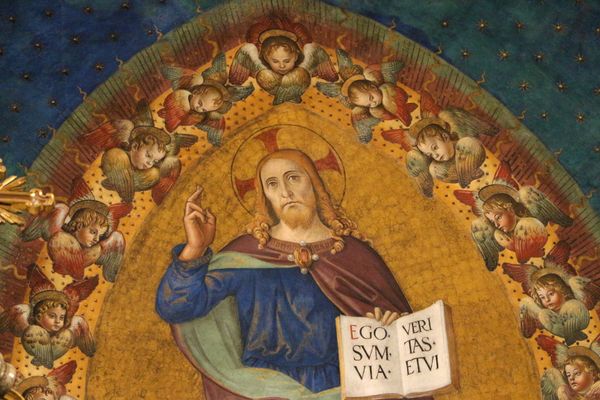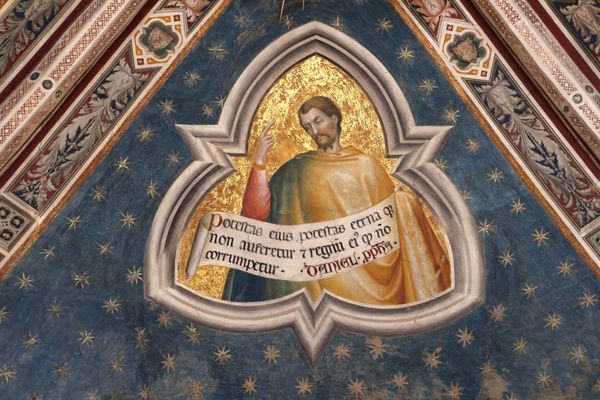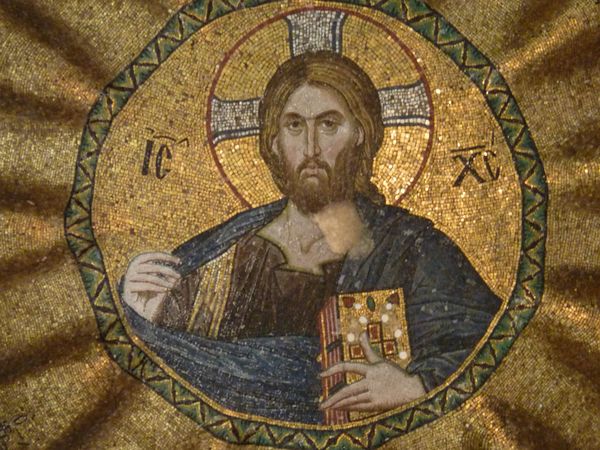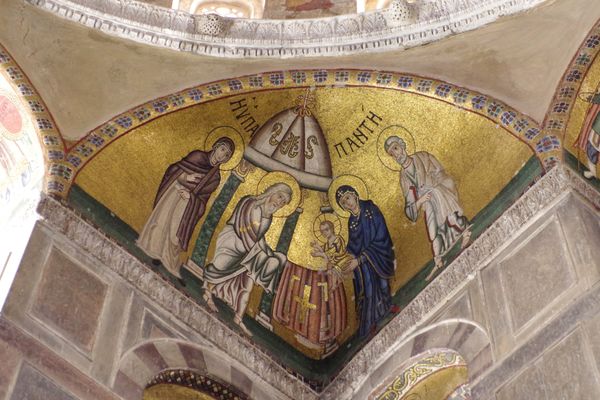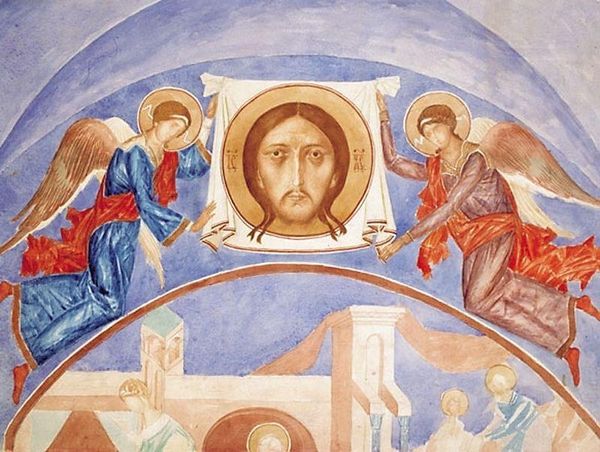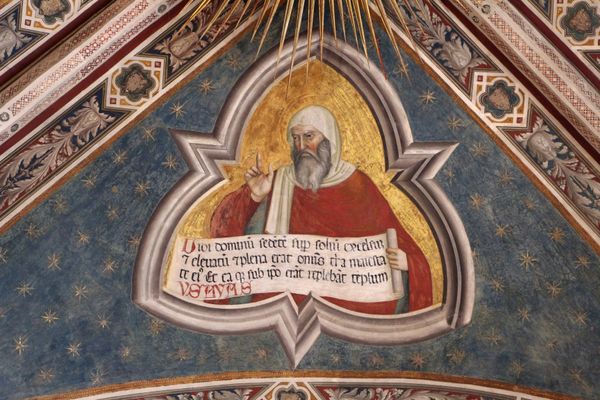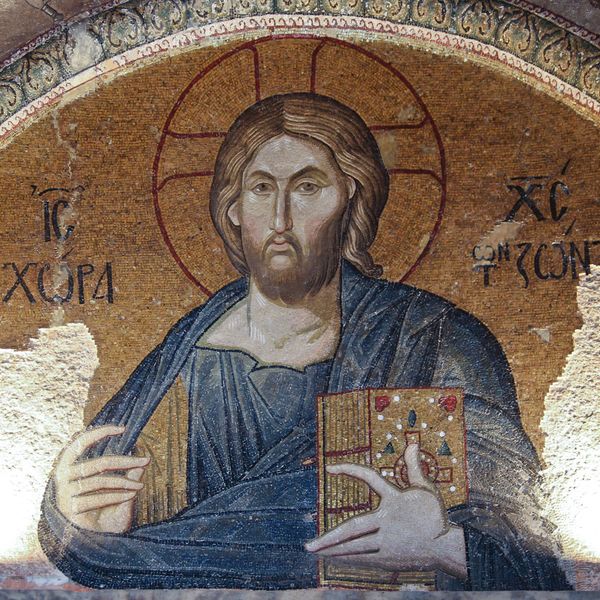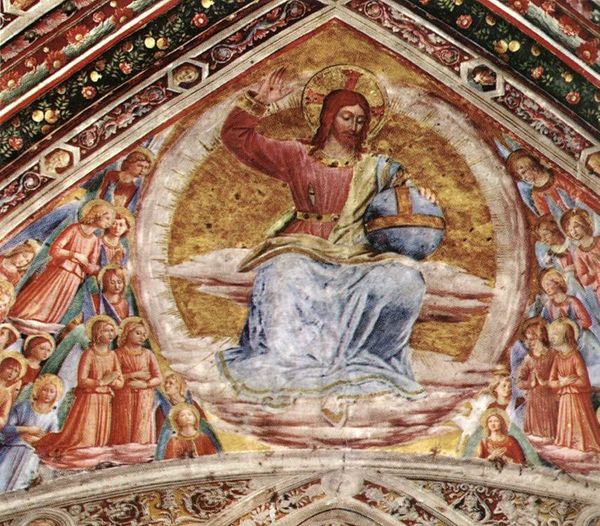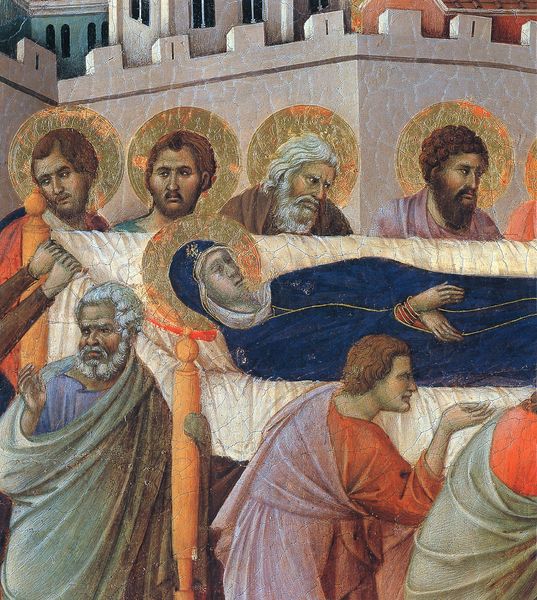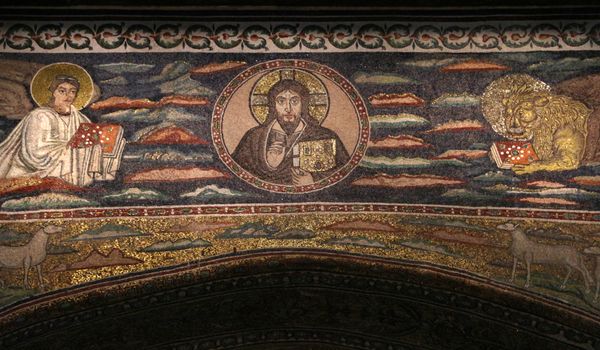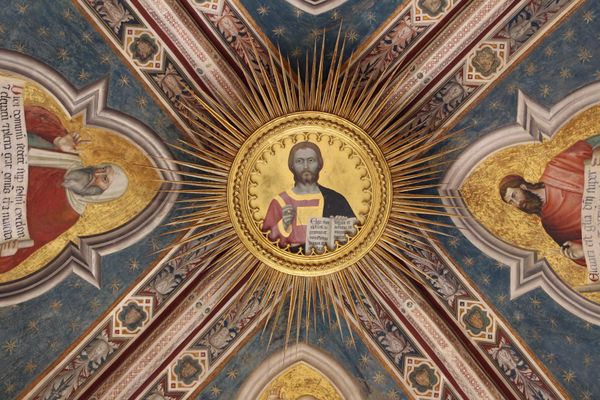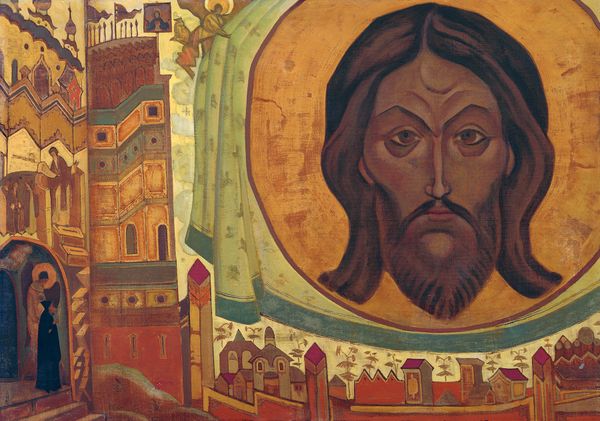
painting, fresco
#
portrait
#
medieval
#
narrative-art
#
painting
#
prophet
#
holy-places
#
figuration
#
historic architecture
#
fresco
#
traditional architecture
#
history-painting
#
italian-renaissance
Copyright: Public domain
Curator: At first glance, I’m struck by how celestial this feels—a prophet set against a cosmos of twinkling stars. Editor: Absolutely. The frescoes in the Rinuccini Chapel, painted around 1370 by Giovanni da Milano, immediately evoke the heavens. The gold leaf shimmers and really heightens that divine connection. Curator: The decision to surround the figure, likely a prophet from the Old Testament, with such vibrant constellations isn't accidental. The star is such a loaded symbol for direction and divinity in Abrahamic faiths. Editor: Precisely. And consider that the Rinuccini Chapel itself served as a private devotional space for the Rinuccini family. This depiction provided not only a sense of piety but, quite possibly, also social affirmation. Locating the patron family within divine context really highlights their own status in Florence. Curator: Look how he holds the scroll—the sacred text. His expression seems almost pensive, connecting him not just to the divine message, but also to his intellectual authority as the translator of heavenly knowledge. Editor: And to that authority conferred by scripture—and of course interpreted by those with power to disseminate those stories and dictate religious practices. Curator: Right, because the depiction of prophets in art always carries implicit messages of spiritual guidance. They serve as intermediaries between God and humanity. Editor: These murals are steeped in power dynamics of 14th-century Florence and deserve close attention. Curator: I am taken with the artist's attention to decorative elements and architectural setting in a new light. Editor: Seeing these frescoes recontextualized sparks new lines of inquiry for me about the Renaissance and contemporary representation.
Comments
No comments
Be the first to comment and join the conversation on the ultimate creative platform.
